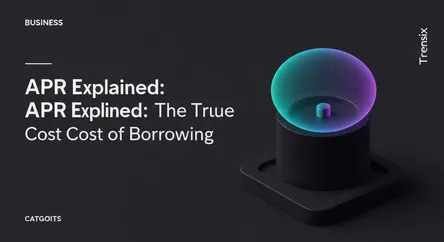Business
APR Explained: The True Cost of Borrowing

Learn what Annual Percentage Rate (APR) means. Understand how this key figure represents the true cost of borrowing for loans, mortgages, and credit cards.
What is it?
The Annual Percentage Rate (APR) is the total annual cost of a loan to a borrower, including all fees and the interest rate, expressed as a single percentage. Unlike a simple interest rate, the APR provides a more comprehensive picture by incorporating other charges such as origination fees, closing costs, or mortgage insurance. Mandated by the Truth in Lending Act in the US, it is designed to give consumers a standardized way to compare the costs of different loan products from various lenders on a level playing field.
Why is it trending?
With global economic shifts and central banks adjusting interest rates to combat inflation, borrowing costs are a major topic of conversation. Consumers are becoming more financially savvy and are actively searching for ways to manage their debt. APR is a critical metric in this environment, as people compare mortgage rates, auto loans, and credit card offers more carefully. Financial literacy movements and media coverage on rising household debt also keep APR in the public eye, emphasizing its importance in making informed financial decisions.
How does it affect people?
A loan's APR directly impacts a person's financial well-being. A lower APR translates to lower monthly payments and less money paid over the life of the loan, freeing up income for other expenses or savings. Conversely, a high APR can significantly increase the total amount repaid. By understanding and comparing APRs, individuals can avoid loans that appear cheap due to a low headline interest rate but are actually expensive because of hidden fees. This knowledge empowers consumers to choose the most affordable credit options, manage their budget effectively, and build a healthier financial future.